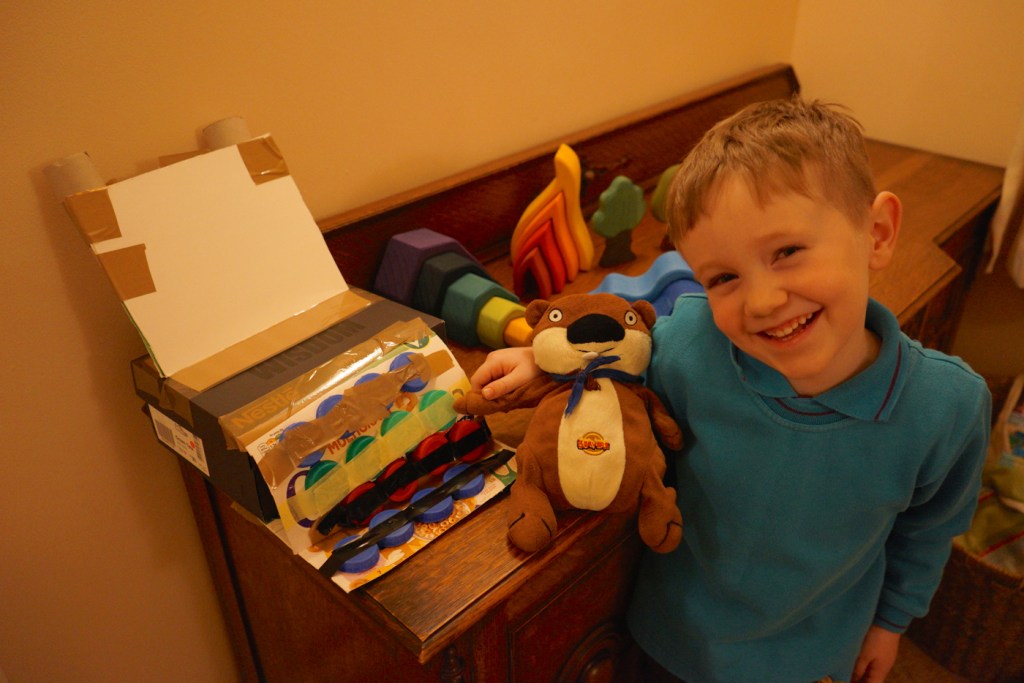Ioan’s been learning about the Story Machine at school, so wanted to make his own. When the Beavers could make their own ‘invention’ he was over the moon.
Resources
- Cardboard box
- Cereal box
- Cardboard rolls (kitchen roll, toilet roll and tin foil roll)
- Bottle lids
- Masking tape
- Sticky tape
- String
Method
Ioan collected together the resources he needed for stage one of his build. He came back from Beavers, very proud of his story machine below.



Then, he decided what his next steps would be to improve his machine. He planned what resources he would need to implement those next steps.
He named his first step, “The making story part.” He was keen to get started, writing his story before he even ate breakfast.









He then wrapped his story around his paper tube, sticking it in place with sticky tape.
The next stage was very fiddly, so he had some help from Taid. They threaded the string through the paper tube and tied it in place on the cardboard box. Tight enough so that the tube stayed in place, but loose enough that you could unravel the story.
Step 2 was, “The shooting ball part.” I was a bit confused as to why a story machine would need to shoot balls. Ioan explained, “Well my stories ARE very good, I need the ball shooter incase somebody wants to steal them!” Of course.
Ioan attached lids to the top of his tubes using string and sticky tape. He then scrunched up some paper to make the balls.
He was very proud of his finished Story Machine.
KS1 National Curriculum Objectives for Design Technology
Design
- design purposeful, functional, appealing products for themselves and other users based on design criteria
- generate, develop, model and communicate their ideas through talking, drawing, templates, mock-ups and, where appropriate, information and communication technology
Make
- select from and use a range of tools and equipment to perform practical tasks [for example, cutting, shaping, joining and finishing]
- select from and use a wide range of materials and components, including construction materials, textiles and ingredients, according to their characteristics
Evaluate
- explore and evaluate a range of existing products
- evaluate their ideas and products against design criteria
Technical knowledge
- build structures, exploring how they can be made stronger, stiffer and more stable
- explore and use mechanisms [for example, levers, sliders, wheels and axles], in their products.






















